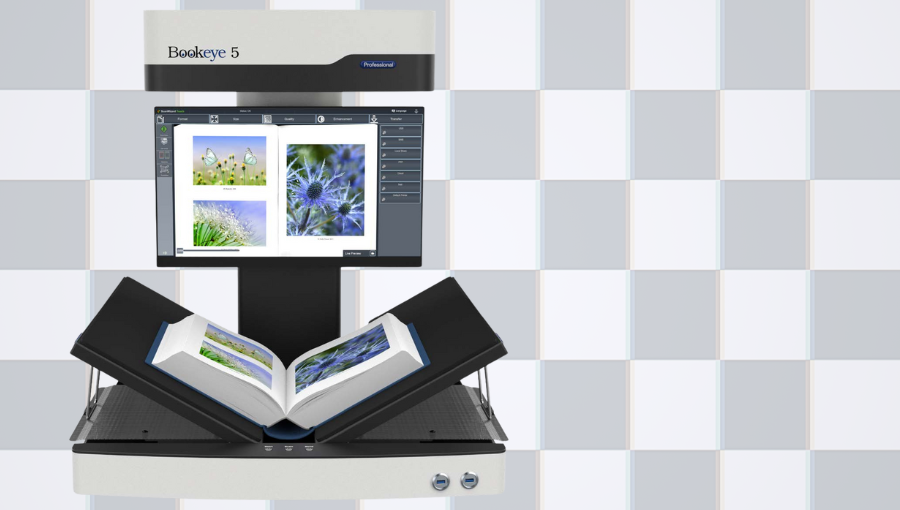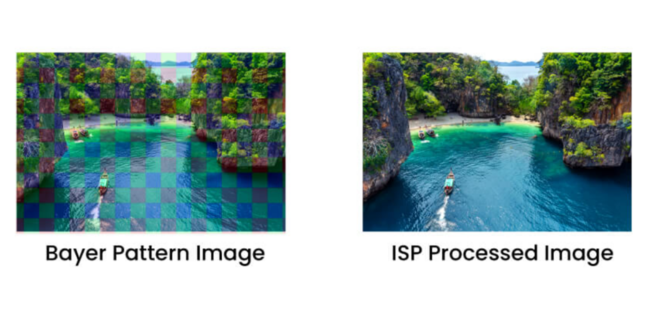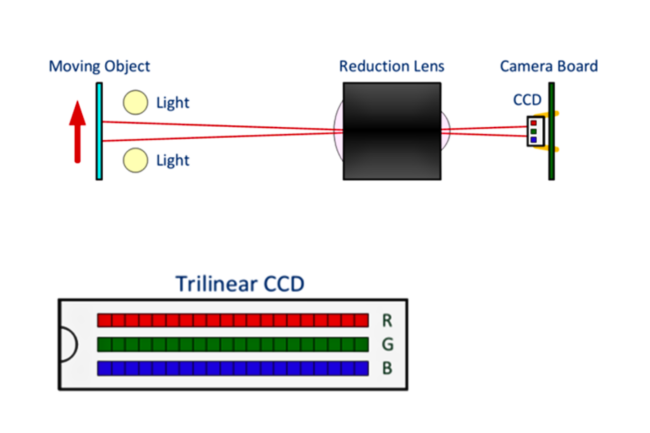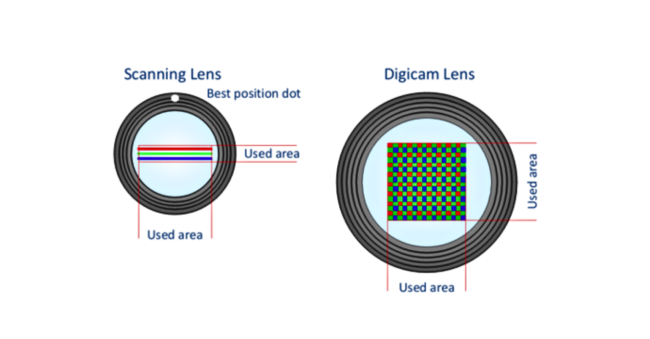
Delving Deeper into Book Scanning: Unravelling the Intricacies of Professional Scanners
Building upon our exploration of digital cameras in the previous blog, we now shed light on the scanning principles, sensors, and lenses that elevate dedicated book scanners to unparalleled heights.
In this chapter, we go deeper into the intricate details that set professional scanners apart from their digital camera counterparts.
Beyond the lens: Crafting the Perfect Image
There is a good reason why companies such as Canon, Image Access, InoTec and others only make use of linear sensors and reject digicam technology for their scanners. The linear sensors used in professional scanners capture red, green and blue lines, consecutively, from a document illuminated with white light. A lens then reduces the captured image and projects it onto the linear charge-coupled device (CCD) sensor. Whilst in professional scanners, the document (object) moves in synch with the exposure of the CCD elements, in a book scanner, it is the camera lens system that moves or in some cases a mirror that rotates over the object, simulating movement.
The red element captures one line of the image, the green element captures another, and the blue element captures a third. Subsequently, a computer organises these lines into the correct order. The Image Signal Processor (ISP)* manages this transformation from the Bayer image to a fully processed image. The resulting image consists of RGB values at full resolution without any Bayer pattern artifacts**.

To further explain, a trilinear sensor will convert light on its surface into electrical signals. Scanners with CCD sensors are able to provide a high colour gamut thanks to RGB colour filters on three consecutive rows of CCD elements. Size matters, therefore high-quality CCD sensors tend to have large pixel sizes (a value of 10µm x 10µm is typical) since this reduces noise and other image-degrading effects.

Scanner lenses
In document/digital capture, the lens is a crucial component. The dimensions of a pixel on the original image at a resolution of 600 dpi is 64µm x 64µm. Therefore, if the CCD elements are 10µm x 10µm, a reduction lens with a ratio of 1:6.4 must be used. This results in both a long track length and a large focal depth. Modern book scanners typically employ a camera setup consisting of a lens and a linear CCD element. The alignment is such that only the distance between these elements changes during the sweep over the book, maintaining the correct focus.
The quality of the reduction lens directly impacts the overall scanning system quality. However, the constraints on scanner lenses are less stringent compared to high-quality digital camera lenses. This is because only the middle section of the lens is utilised due to the nature of the line sensor. Unlike digital camera lenses, a scanner lens doesn't need to be as large in diameter, avoiding issues like colour aberrations, geometric inaccuracies such as pin cushion distortions, and a loss of intensity in the outer edges. Scanners serve purposes beyond capturing images; they are also used for precision applications, such as quality control. This underscores the importance of precision in scanner systems, preventing a loss of detail outside of their focal area.

Scanning Principles
Scanning books is challenging because they aren't flat. Scanners need to follow the book's curved surface and adjust focus continuously. There are two main scanning directions: top to bottom or left to right. Each has its pros and cons. Scanning top-down requires more pixels in the camera, but it covers a shorter distance and is faster. Some scanners can also scan sideways, adjusting focus and resolution while scanning curved surfaces. These scanners can handle flat documents, partially opened books, and objects in a V-shaped cradle. Scanners that scan from the top down cannot handle flat and V-shaped documents simultaneously.
As mentioned in our first blog, some vendors make use of digital cameras, falsely claiming that these work the same as book scanners. However, unless a document is completely flat, a digital camera is insufficient and will even struggle to capture a high-resolution black-and-white print. Vendors try to overcome this issue either by using a very long focal length, making the scanners very tall, or by using low-cost low-resolution chip cameras to give the impression of more focal range.
Guiding Your Scanning Journey with Dyanix
As an independent expert in book scanning, Dyanix provides personalised recommendations, including On-Site and Installation services for ImageAccess book scanners, along with expert maintenance and training services spanning the EMEA region. Dyanix is committed to ensuring your scanning journey is not only efficient but also tailored to your specific needs.
Conclusion
As our journey through the intricacies of book scanning unfolds, our mission remains clear: to simplify technical jargon and provide practical tools for informed decision-making in choosing the ideal book scanner. Stay tuned for upcoming instalments in this series, where we will continue our exploration of the ever-evolving realm of scanning technology.
Contact us today to discover the perfect book scanner tailored to your unique needs. And, if you haven't already, dive into the foundational aspects of book scanners in our previous instalment, "Preserving Pages: Introducing Book Scanners."
* The Image Signal Processor (ISP) is employed to process raw images within camera modules. It executes operations on the captured image, including demosaicing, denoising, and other automated functions, contributing to the production of an improved image.
** Bayer pattern artifacts are visual distortions in digital images due to the Bayer filter array, affecting colour, accuracy and quality.